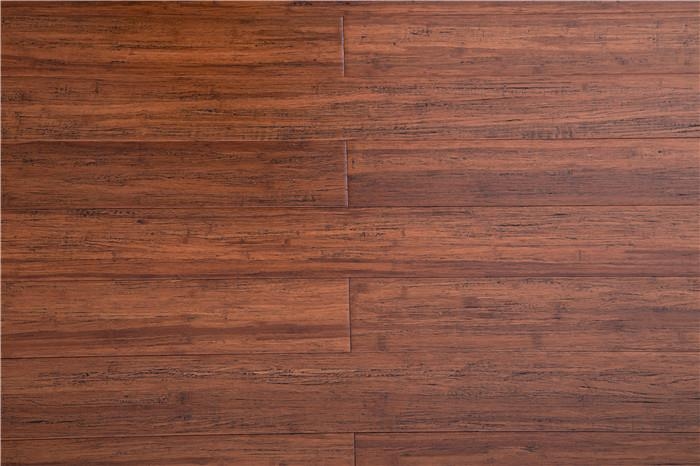For homeowners seeking a flooring solution that blends durability, natural beauty, and easy installation, floating bamboo floors are becoming an increasingly popular choice. This innovative installation method eliminates the need for nails or glue, making it ideal for DIY projects, fast renovations, and reducing environmental impact. But what makes floating bamboo floors stand out even more is the material itself: bamboo — not a tree, but a grass with remarkable properties.
Bamboo: A Renewable Powerhouse
Unlike hardwood trees that can take 30 to 50 years to mature, bamboo regenerates in just 4 to 6 years. Specifically, Moso bamboo, the species most commonly used for flooring, grows rapidly and can be harvested without killing the plant. Once cut, new shoots emerge from the same root system, making it a truly renewable resource.

This fast growth cycle does more than just save time—it reduces pressure on forests, lowers carbon emissions, and offers a sustainable alternative to traditional timber. Bamboo plantations also absorb more carbon dioxide than most hardwood forests, contributing to a healthier planet.
Not Just Eco-Friendly — It’s Built to Last
Floating bamboo flooring isn’t about compromising quality for sustainability. In fact, strand woven bamboo flooring — commonly used for floating installations — is known for its exceptional density and strength. Through a process of shredding, compressing, and binding bamboo fibers under high pressure, the resulting boards are harder than oak and even denser than many tropical hardwoods.
This makes them highly resistant to dents, scratches, and wear, especially in high-traffic areas. Compared to laminate or SPC (stone plastic composite) flooring, strand woven bamboo flooring offers a natural, warmer feel underfoot, plus superior long-term durability. Laminate may peel or warp over time, and SPC, while waterproof, can feel cold and artificial. Bamboo strikes a balance between strength, comfort, and environmental responsibility.
No Nails, No Glue: How Floating Bamboo Floors Work
Unlike traditional flooring methods that involve adhesives or nails to fix planks to the subfloor, floating floors “float” above the base surface. Bamboo planks are designed with click-lock systems, allowing them to snap together tightly without the need for fasteners or glue.
This offers several practical advantages:
Faster installation: Ideal for homeowners or contractors looking to save time.
No damage to subfloor: Perfect for rentals or temporary spaces.
Easier replacement: Individual planks can be removed and replaced without dismantling the entire floor.
Less mess: No sticky adhesives or fumes during the process.
These benefits make floating bamboo floors a smart solution for both residential and light commercial spaces.
Low Formaldehyde Emissions, High Peace of Mind
One of the common concerns with engineered flooring products is the emission of formaldehyde, a volatile organic compound (VOC) that can impact indoor air quality. Poor-quality laminate or composite flooring may release unhealthy levels of these chemicals, especially in poorly ventilated spaces.
High-quality strand woven bamboo flooring is manufactured to meet strict CARB Phase 2 and E1 European standards, ensuring low formaldehyde emissions and safe indoor air levels. Many bamboo flooring products are even certified as formaldehyde-free, using adhesives that don’t off-gas harmful fumes.
For families with children, pets, or respiratory sensitivities, this matters. Choosing bamboo flooring helps create a healthier living environment, without sacrificing aesthetics or strength.
A Healthier Home and a Smarter Floor
Floating bamboo floors support not just physical health, but also mental well-being. Natural materials like bamboo introduce warmth and organic texture into a space, helping reduce the sterile or artificial feel often associated with synthetic flooring.
The acoustic properties of strand woven bamboo also contribute to a quieter home. Compared to laminate or SPC, bamboo absorbs sound better, reducing the echo effect in open-plan living areas. Adding an underlayment beneath floating bamboo further enhances comfort, insulation, and noise reduction.
Better Than Laminate or SPC? Here’s Why
While laminate and SPC flooring have their place in the market, they often fall short in crucial areas when compared to strand woven bamboo:
Feature | Strand Woven Bamboo | Laminate | SPC |
|---|---|---|---|
Material | Natural, renewable | Synthetic | Synthetic |
Surface Feel | Warm, organic | Hard, artificial | Cold, rigid |
Durability | High (dense fiber structure) | Moderate | High |
Water Resistance | Moderate (with finish) | Low to moderate | High |
Emissions | Low (CARB/E1 compliant) | Varies | Varies |
Lifespan | 25+ years | 10–15 years | 15–20 years |
Repairability | Can be refinished (some types) | Cannot be refinished | Cannot be refinished |
Bamboo offers a more authentic, sustainable, and long-lasting alternative, especially for those who value natural materials and a timeless look.
A Flooring Choice That Fits Modern Lifestyles
The rise of floating bamboo floors reflects a broader shift in how people think about their living spaces. Homeowners are no longer just looking for aesthetics—they want efficiency, sustainability, and health. Floating bamboo floors check all these boxes.
They’re quick to install, safe for indoor air, easy to maintain, and environmentally responsible. And thanks to modern manufacturing techniques, they’re also available in a wide range of colors, textures, and finishes to match any interior style — from rustic to contemporary.
Making A Smarter Flooring Decision
Whether you're renovating a single room or outfitting an entire home, floating bamboo flooring offers a compelling mix of performance and practicality. With no nails, no glue, and minimal environmental impact, it brings together the best of modern engineering and natural materials.
As a factory technologist, I’ve seen firsthand how much care, detail, and innovation go into every plank. Investing in bamboo flooring isn’t just about updating your space — it’s about choosing a product that respects the planet, supports healthier homes, and stands the test of time.
